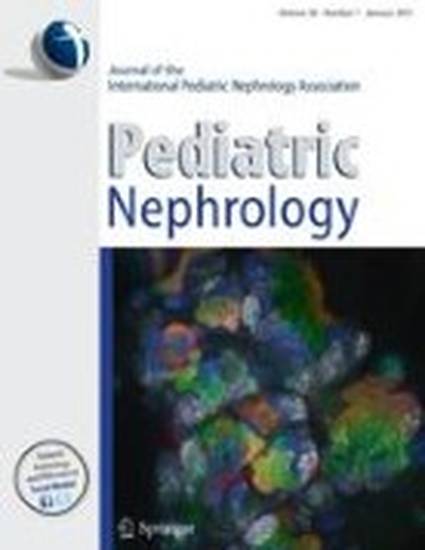
Article
Large inter-assay difference of serum creatinine in pediatric population: a threat to accurate staging of chronic kidney disease
Pediatric Nephrology
(2022)
Abstract
Background: Serum creatinine concentration is a primary component of Bedside Schwartz equation for estimated glomerular filtration rate (eGFR) in children. To standardize creatinine measurement, most manufacturers have adopted calibration procedures traceable to isotope dilution mass spectrometry (IDMS) using National Institute of Standards and Technology reference material. However, reference material representing much lower creatinine concentrations seen in children is not available and it is unclear how well commercial assays perform at pediatric levels.
Methods: One thousand nine hundred seventy-one specimens from consecutive children <19 years, with creatinine ≤0.8 mg/dL by Abbott Jaffe method were included. Creatinine measurements were compared between Abbott-Jaffe and Abbott-enzymatic methods. Furthermore, we evaluated performance of six commercial creatinine assays at concentrations seen in pediatric patients utilizing IDMS traceable serum samples.
Results: Median difference (enzymatic-Jaffe) for prepubertal females was -0.18 mg/dL (2.5%tile, 97.5%tile: -0.30, -0.06), -0.12 mg/dL (-0.25, -0.00) for pubertal females, -0.17 mg/dL (-0.30, -0.04) for prepubertal males, -0.11 mg/dL (-0.24, 0.01) for pubertal males. Bias appeared proportional for each subgroup and decreased as creatinine concentrations increased. Using IDMS traceable samples, the greatest inter-assay variability was seen with the lowest creatinine levels (target 0.273 mg/dL), where 67% (4/6) of methods failed to reach minimal bias specification of 8% (range -7.5 to 86%). For samples with higher creatinine targets (0.440-0.634 mg/dL), two methods failed to meet minimal bias specification, whereas four showed bias <8%.
Conclusion: Many commonly used creatinine assays remain inaccurate for pediatric populations after over a decade of nationwide efforts to standardize measurements. When creatinine-based eGFR is used for chronic kidney disease (CKD) staging in children, large inter-assay variability can lead to disease misclassification, inappropriate diagnostic and therapeutic interventions. A higher resolution version of the Graphical abstract is available as Supplementary information.
Keywords
- creatinine,
- inter-assay variability,
- Jaffe,
- pediatric,
- eGFR
Disciplines
Publication Date
March, 2022
DOI
10.1007/s00467-021-05335-x
Citation Information
Lao K, Sykes E, van Wijk XMR, Li J, Williams J, Gherasim C, et al [Sun Q]. Large inter-assay difference of serum creatinine in pediatric population: a threat to accurate staging of chronic kidney disease. Pediatr Nephrol. 2022 Mar;37(3):677-681. doi: 10.1007/s00467-021-05335-x. PMID: 34757479.
